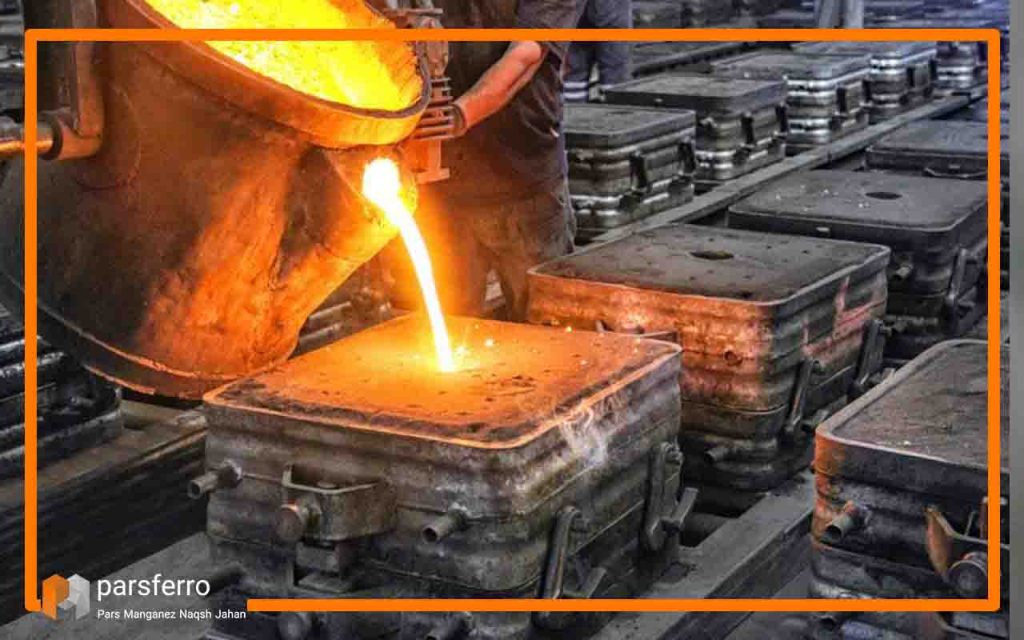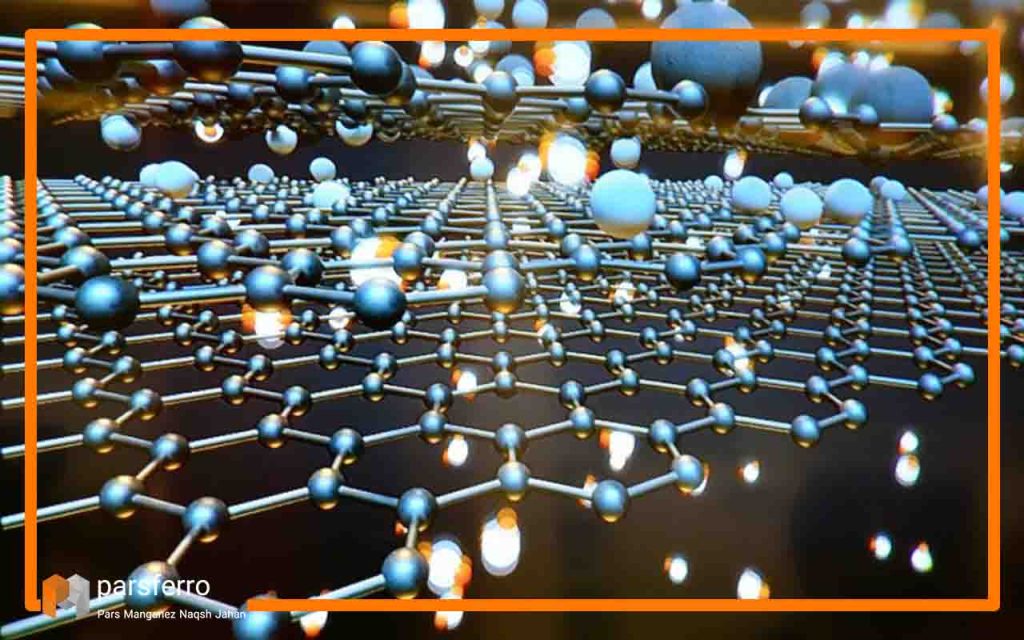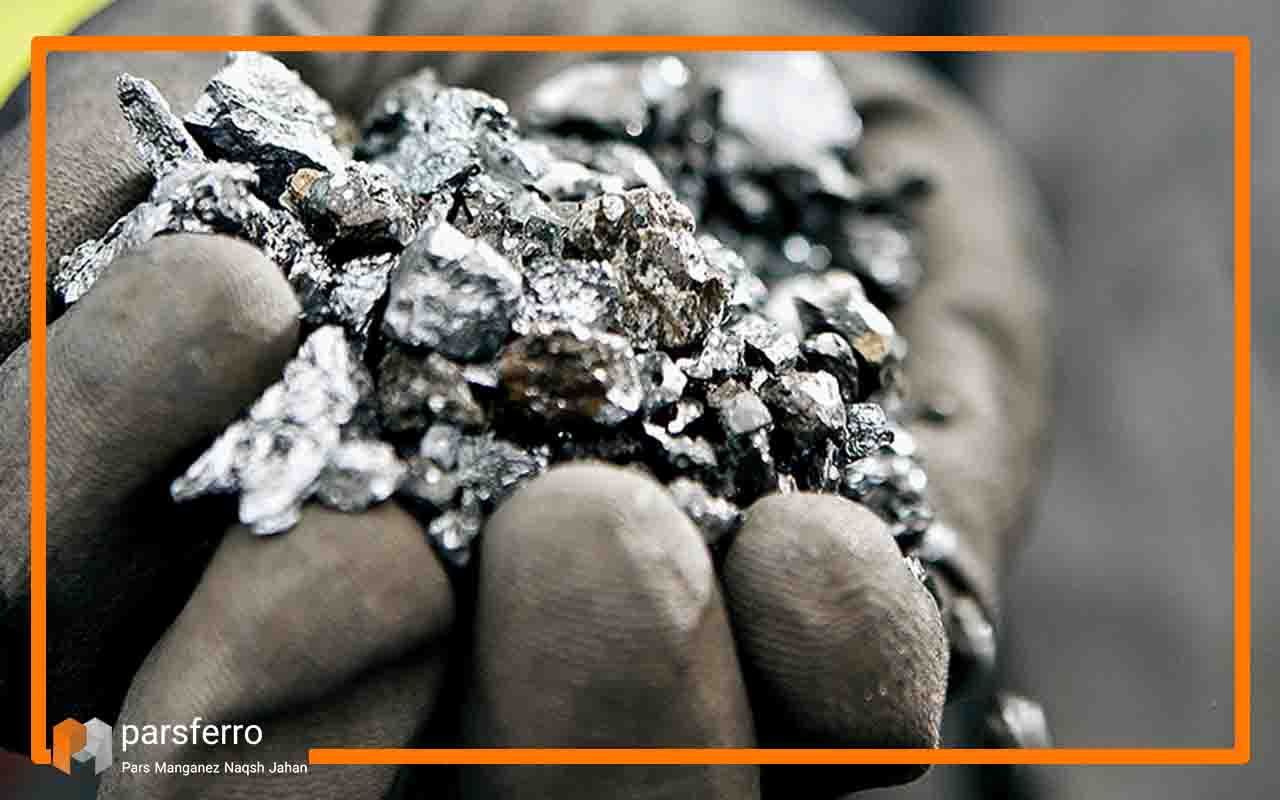In minerals and materials production, the integration of robust process principles is paramount to achieving optimal efficiency, ensuring top-notch quality, and addressing environmental concerns. This article from Pars Manganez Naqsh Jahan deals with key aspects of industrial processes, metallurgy, chemical processes, materials engineering, mining, smelting, refining, materials science, environmental impact, quality control, energy efficiency, and safety practices.
Metallurgy and industrial process
The production of metals through metallurgy involves various industrial processes aimed at extracting, refining, and shaping raw materials into useful metal products. Here is an overview of some key industrial processes in mineral and material production for metallurgy:
1. Mining
- Exploration: Geologists identify potential mineral deposits.
- Extraction: Techniques like surface mining or underground mining are employed to extract ore containing desired metals.
2. Ore Processing
- Crushing and Grinding: Large chunks of ore are reduced to smaller pieces.
- Beneficiation: Techniques such as magnetic separation, gravity separation, and flotation are used to concentrate the valuable minerals and eliminate impurities.
3. Smelting
- Roasting: Ores are heated in the presence of air to remove volatile components and convert certain minerals into oxides.
- Smelting: Concentrated ore is mixed with a reducing agent (such as coke) and melted to extract the metal.
4. Refining
- Pyrometallurgical Processes: High-temperature processes like distillation, liquation, and electrolysis further purify the metal.
- Hydrometallurgical Processes: Leaching, solvent extraction, and precipitation are employed using aqueous solutions to separate and purify metals.

5. Casting
- Molding: Molten metal is poured into molds to create desired shapes.
- Solidification: The metal cools and solidifies in the mold.
6. Forming and Shaping in materials industry
- Rolling: Metal sheets or bars are passed through rollers to reduce thickness or change shape.
- Extrusion: Metal is forced through a die to create complex shapes.
- Forging: Metal is shaped through controlled deformation.
7. Heat Treatment
- Annealing: Heating and slow cooling to relieve internal stresses and improve hardness.
- Quenching: Rapid cooling to increase hardness.
- Tempering: Reheating to a specific temperature to achieve desired mechanical properties.
8. Surface Treatment
- Coating: Application of protective coatings to prevent corrosion.
- Plating: Electrochemical deposition of a thin layer of metal onto a substrate.

9. Quality Control
- Testing: Various tests, such as hardness tests, tensile tests, and non-destructive testing, are conducted to ensure product quality.
- Inspection: Visual inspection and measurements to verify conformity to specifications.
10. Recycling
- Collection: Gathering scrap metal from various sources.
- Processing: Melting and purifying scrap metal for reuse in the production process.
These processes are integral to the production of metals and materials for various industries, and advancements in technology continue to improve efficiency, reduce environmental impact, and expand the range of possible applications.
Chemical Processes in materials engineering (ferroalloys)
Metallurgy involves the extraction, processing, and refining of metals from their ores, and ferroalloys play a significant role in various metallurgical processes. Ferroalloys are alloys of iron with a high proportion of one or more other elements, such as manganese (Mn), silicon (Si), chromium (Cr), or nickel (Ni). These alloys are commonly used in the production of steel and other alloys to impart specific properties to the final product. Here are some key chemical processes involved in the production of ferroalloys:
1. Ferrochromium (FeCr)
- Raw Materials: Chromite ore (FeCr2O4), coke, and fluxes.
- Process: The chromite ore is mixed with coke and a flux (usually limestone) in an electric arc furnace. The reduction of chromite occurs in the furnace, producing ferrochromium alloy and carbon dioxide.
- Chemical Reaction: FeCr2O4+8C→2Fe+8CO+Cr2O3
2. Ferromanganese (FeMn)
- Raw Materials: Manganese ore (MnO2), iron ore, coke, and fluxes.
- Process: Similar to ferrochromium, the raw materials for ferromanganese are mixed and smelted in an electric arc furnace.
- Chemical Reaction: MnO2+2Fe+4C→Mn+2FeMn+4CO

3. Ferrosilicon (FeSi)
- Raw Materials: Silica (SiO2), coke, and iron ore.
- Process: The materials for ferro silicon are mixed and smelted in an electric arc or submerged arc furnace. The reduction of silica by carbon produces silicon and carbon monoxide.
- Chemical Reaction: SiO2+2C→Si+2CO
4. Ferrotitanium (FeTi)
- Raw Materials: Ilmenite (FeTiO3) or rutile (TiO2), coke, and iron ore.
- Process:The raw materials are mixed and smelted in an electric arc or plasma furnace.
- Chemical Reaction: FeTiO3+2C→Fe+TiO2+2CO
5. Ferronickel (FeNi)
- Raw Materials: Nickel laterite ores, iron ore, coke, and fluxes.
- Process: Ferronickel is usually produced in electric arc furnaces. The reduction of nickel laterite ores and the addition of iron produce ferronickel.
- Chemical Reaction: NiO+Fe→Ni+FeO
These ferroalloys are vital in the steelmaking process as they introduce specific alloying elements to enhance the properties of the final steel product, such as corrosion resistance, strength, and heat resistance. The choice of ferroalloy and the production process depend on the desired steel characteristics and the properties of the raw materials available.
Materials Science and Environmental Impact
Materials science, as a multidisciplinary field, profoundly influences the environment both positively and negatively. Positively, it contributes to sustainable practices through the development of recyclable materials, energy-efficient technologies, and advancements in renewable energy. However, the extraction and processing of raw materials, waste generation, and the use of toxic substances in manufacturing can have adverse environmental effects, including resource depletion, pollution, and increased carbon emissions.
Mitigation strategies involve promoting recycling and a circular economy, adopting green chemistry practices, conducting life cycle assessments, and researching alternative materials to minimize the environmental impact of materials throughout their life cycle. Continued research and innovation in materials science are essential for striking a balance between technological advancements and environmental sustainability.

Energy efficiency in the materials industry (alloys)
Energy efficiency in the alloys industry is a critical aspect for both economic and environmental reasons. Alloys, which are mixtures of two or more elements, often metals, are widely used in various industries for their enhanced properties. The production of alloys involves multiple energy-intensive processes, including mining, ore processing, smelting, and refining. Improving energy efficiency in the alloys industry can lead to reduced operational costs and a diminished environmental footprint. Strategies for achieving energy efficiency in this sector include:
- Advanced Processing Technologies
- Recycling and Scrap Usage
- Process Optimization
- Energy Recovery Systems
- Research and Development
- Life Cycle Assessment
By adopting these strategies, the alloy industry can enhance its energy efficiency, reduce greenhouse gas emissions, and contribute to a more sustainable and environmentally friendly manufacturing process.
Safety practices in material science (ferroalloys)
Safety practices in the ferroalloys industry are of paramount importance due to the nature of the processes involved, which often include high temperatures, heavy machinery, and potentially hazardous materials. Ensuring the safety of workers, protecting the environment, and preventing accidents are key priorities. Here are some essential safety practices in the ferroalloys industry:
- Personal Protective Equipment (PPE)
- Training and Education
- Emergency Response Planning
- Ventilation and Dust Control
- Machine Guarding
- Process Monitoring and Automation
- Chemical Hazard Management
- Regular Safety Audits
- Workplace Ergonomics
- Communication and Reporting
Conclusion
In conclusion, the principles governing minerals and materials production, particularly in metallurgy and materials engineering, are crucial for achieving efficiency, maintaining quality, and addressing environmental concerns. The intricate processes involved, from mining to refining and alloy production, require a comprehensive understanding of industrial, chemical, and safety practices.


No comment